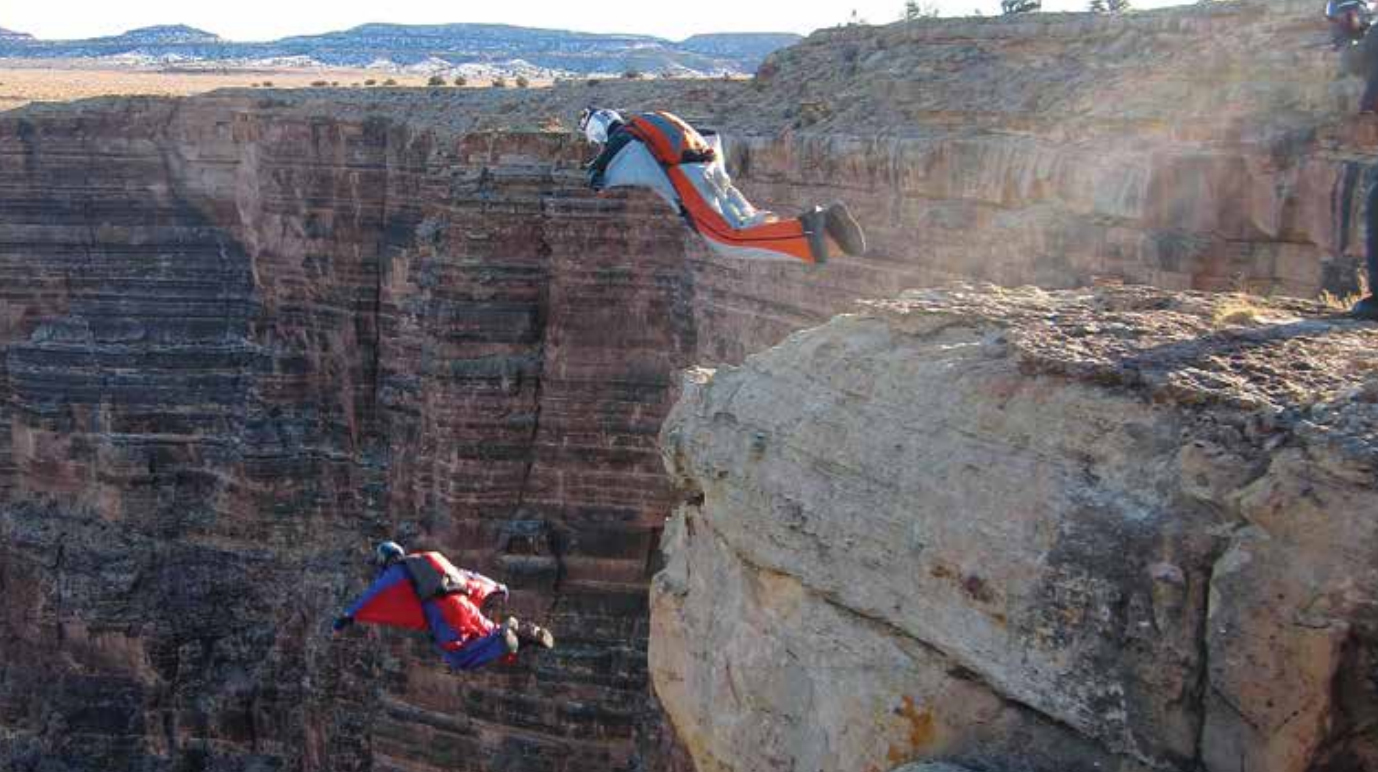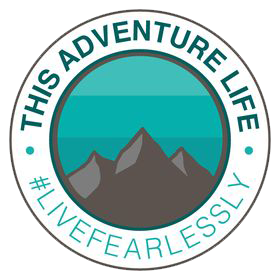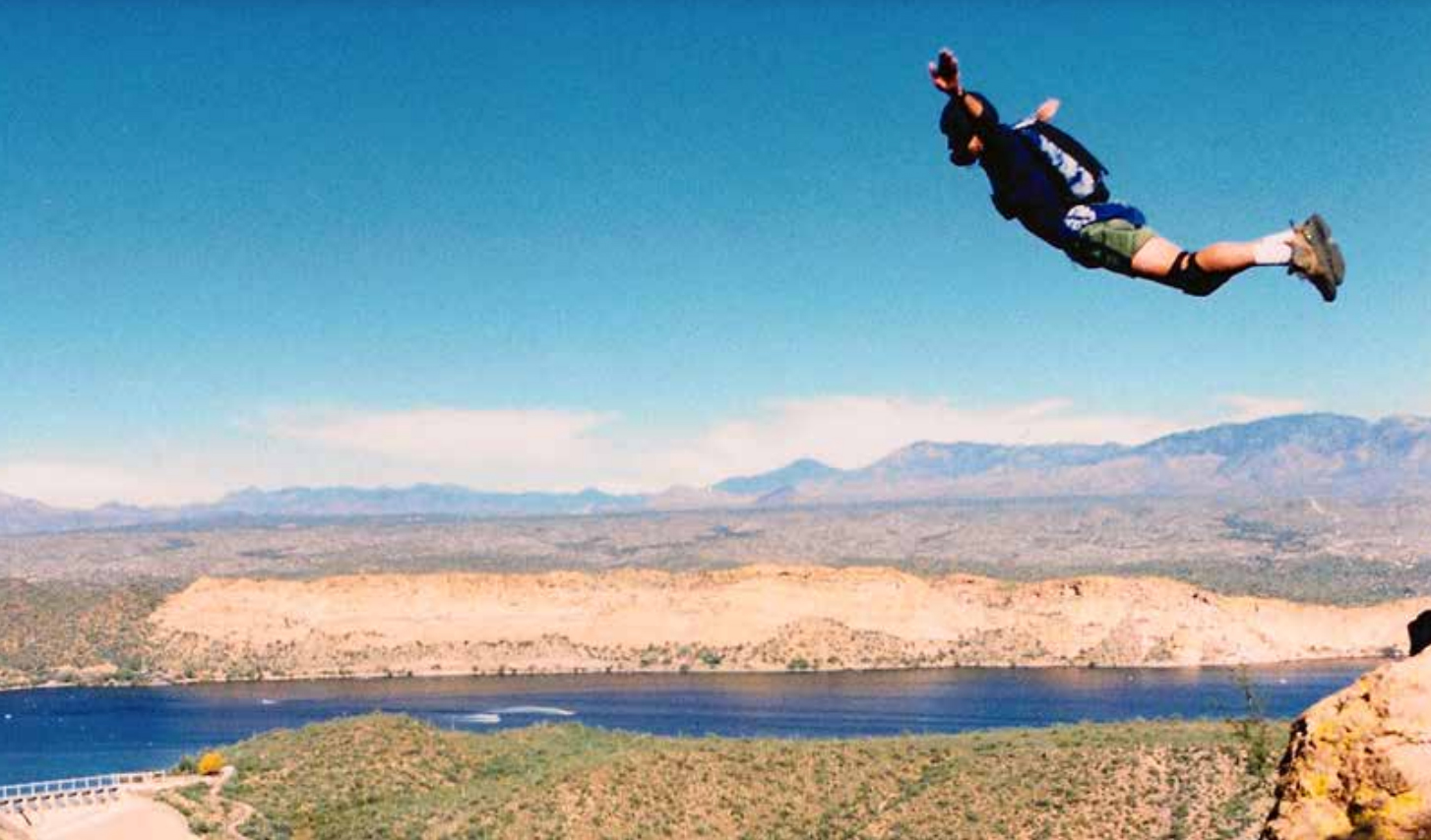Am I normal? I hope not! Normal people don’t want to fly without an engine but I love it, despite the risks. Whether you are a skydiver, BASE jumper, wingsuit pilot, paraglider pilot, hang glider pilot, speed flyer, ground launcher or all of the above, you probably love to feel the freedom of flying, unencumbered by anything except your imagination. You probably love the camaraderie of like-minded people enjoying the same experiences, the natural environment, and most certainly you have a love for adventure and the challenge of finding the boundaries of flight. I know I do, and I know my buddies do!
After taking up all these different disciplines of flight, the only thing I would have done differently would be to take them all up sooner. Each discipline of flight has its own characteristics, but the end result is the same–your feet leave the ground and you are consumed by the moment. Psychologists label this phenomenon as “flow” but most know it as “being in the zone.” Flow is defined as the mental state of a person who is fully engaged in what he or she is doing. It’s a feeling of energized focus, full participation and success in the course of the activity. I live for flow and have a passion to fly and surround myself with people like me who love to fly. My desire to fly is so strong that even injuries won’t stop me. Witnessing too many fatalities and life changing injuries did eventually make me rethink my game plan, but my passion gets me right back up in the air. I still haven’t found a better way to pass the time than flying and hanging out with my flying friends.
My “obsession” started in 1991 when I made my first skydive and continues today with paragliding and hang gliding. Over the years, my lack of forethought and preparedness has landed me in the hospital more than I would have imagined. My first injury was on skydive #57 and it was so minor I didn’t need any treatment to fix it. I landed in high winds and did not run around my parachute fast enough. I tripped and fell to my right side, landing on my ring finger, jamming it and breaking it. I continued to skydive for 15 more years with no injuries.
Five years into my skydiving career I was looking for even more excitement so I began BASE-jumping, which was a little more intense and led me to a longer list of injuries, but I kept on flying. My first 276 BASE jumps caused the most injuries and it began with a compression fracture to my L4 on jump #13 in Moab, Utah off what is now called Mary’s Gash. It was during my first running exit with the pilot chute stowed in its pouch.
That’s when I learned the golden rule of not looking down at your feet on exit. I ran off, looked down at a small ledge a couple feet below the exit point and my body followed my eyes. I wound up in a completely vertical head-down position, panicked and threw my pilot chute. My canopy inflated while I was upside-down, causing severe whiplash, sending me into multiple line twists with an off-heading opening, flying back towards the cliff. I grazed the cliff as I flew away, stars popping in front of my eyes. I landed uneventfully and laid down moaning and groaning from the pain in my back. I ate some pain pills that evening and continued jumping the next day, unaware I had a compression fracture in my vertebrae. They were strong pills–thanks Annie!
On jump #66 I was at a Bridge Day competition and tried to land dead center on target. The target was on top of rounded river rocks and my shoes did not have the cushion or support needed to take the impact of a stall for a dead center landing. I hit hard, fell to one side, and could not stand up because I had fractured heel. After a 69-day recovery, I was jumping another bridge in the middle of the night.
Jump #185 saw me land down-wind in a riverbed after jumping Burro Creek Bridge, knocking myself out for 20 minutes and sustaining several facial lacerations requiring 50 stitches. The failure of that jump was due to my misjudgment of the conditions. It was late in the afternoon and we had been jumping all day. The wind switched as it does when the land heats and cools. Before jumping, I noticed that even though the wind was coming from the opposite direction, it looked weak in intensity and the jump looked doable. I was wrong. I flared too late and suffered the consequences. That evening we drove to the nearest hospital and I was stitched up by a plastic surgeon. I jumped a cliff four times the following day. What’s wrong with me?

On jump #196 I found myself at the top of a 1,100-foot cliff named Courthouse Rock in the middle of the desert, chomping at the bit to jump and get in the air. The wind had been blowing strong and in our face all morning and it was starting to look like we might have to hike down. Every BASE jumper knows hiking back down is the very last resort. So as the wind turned to a more cross direction and lightened up a little, I got antsy and justified jumping. I launched and opened high to avoid the buttress half way down. Again, due to my lack of forethought and knowledge of the mechanics of wind, I was unaware the wind was blowing into the buttress and causing a tornado like wind funnel that turned my canopy 450 degrees during opening, and sent me into line twists. The next thing I saw was the buttress racing up at me. I applied the brakes through the line twists and lifted my feet, but impacted with my right instep, sustaining a deep bruise that took a few years to heal.
After striking the buttress halfway up the cliff, my body began spinning around to the left as I untwisted, dragging my canopy along the cliff face tearing cells and snapping lines in the process. I landed fine and yelled up to my friend that I was ok. Then, as happens late in the morning in the desert from time to time, the wind died to zero. Luckily, I had a second rig and continued to jump that day, but the hikes were definitely not as comfortable.
On jump #276, I experienced my last BASE jump injury. Three of us were jumping off a short cliff, Eagles Nest, high up in the mountains of Norway. On heading canopy openings are key to a safe jump at Eagles Nest, and a 90-degree opening to the left will likely put you in the trees—and that’s exactly what happened to all of us! Dwaine jumped first, had a 90-degree opening to the left and landed near the base of the cliff. He twisted his ankle badly and had to pull his canopy from the trees. Not wanting to hike down, I decided to jump and had a 90-degree off-heading opening to the left, landed precariously on a small ledge, fell to the right onto a small stump that jabbed me hard and separated my ribs. Even after watching two consecutive 90-degree off heading openings to the left, Steve still decided to jump and had a 110-degree opening to the left, the worst of the three openings. Steve impacted a boulder and cracked his pelvis in two places. Dwaine was able to hike out, but Steve and I spent a miserable night stuck high up on the mountainside exposed to a relentless rainstorm while being attacked by giant hungry mosquitoes.
The following morning climbers rappelled down the steep mountainside and secured and prepared us for a ride in the Sea King helicopter to the hospital in Stavanger. Steve was treated and returned home. I was X-rayed, released and continued to jump the following day. After 276 jumps and many injuries, my learning curve flattened and my decision making process allowed me to continue on for another 500 BASE jumps with no injuries—not even a scratch. But, the many injuries and fatalities I witnessed eventually pushed me into retirement.
The first ten years of my jumping career were peppered with injuries, mostly my own, and I had even seen a couple fatalities. But during the jumping seasons of 2002 and 2003, I witnessed and was intimately involved with seven fatalities. On July 23, 2002, Matt Strickland and I nearly collided during the opening sequence on a 3-way jump from exit #6 at Kjerag, Norway. Immediately following our jump, Lori Barr, a student BASE jumper, panicked and lost altitude awareness, striking the walls of Kjerag without a parachute, killing her instantly. The recovery of her broken body is still clear in my mind. Kirill Kiselev jumped directly after me from the Vikesaksa exit in Eikesdalen, Norway. We searched for him through the night. His lifeless body was found by rescuers the next morning. Tore Lillebostad exited Harstadnebba on a 3-way jump with two of his friends on a jump right after me. Tore struck the wall during freefall and hung there for two days as spectators watched the recovery in hopes of good news, only to hear there was none.
These three fatalities that occurred within five weeks didn’t seem to faze Rob Tompkins, one of my travelling partners that year. Rob and I spent the summer of 2002 exploring the beautiful walls of Switzerland and Norway and the limits of wingsuit flight. We attempted to out-fly the talus below the walls and steer our winged bodies closer and closer towards the cliff faces while wearing our freshly stitched first generation Skyflyer suits. We racked up a lot of wingsuit flights and boosted our confidence through the roof! Rob became so overconfident he started to become delusional.
Rob believed that when he did a reverse gainer while wearing his wingsuit, he would gain additional speed, and transition with greater acceleration and therefore fly faster. He believed if he performed the reverse gainer, it would give him the ability to out fly the steep talus on “RT’s Jorner” (Norwegian for “Rob Tompkins Corner”—named after his last jump), a 4-second rock drop exit at the cliffs of Kjerag. Many wingsuit pilots, myself included, tried to convince him the jump was not survivable. We even showed him video analysis of his flights and the steep talus from different angles. But on September 12, after my student and I jumped, Rob jumped, and found his theory to be incorrect. His body was recovered by the heroic rescue team from Stavanger.
Two weeks later I returned to the United States and had to find a new gig to keep food in my belly and the dream alive. I made my way to Oahu and begged Tugi of Aloha Skydivers to give me a chance as a tandem and camera flyer. He did, and one cloudy day while I was spotting for the load with my passenger attached, waiting for a hole to open so we could all get out of the plane, the ground suddenly began to appear. We balled up and rolled out the door. We were followed by the rest of the tandems on the load. My passenger and I landed uneventfully a couple miles from the DZ and were picked up by a frantic bad spot driver telling us about a tandem pair that went in, but couldn’t be found. A few minutes later we found them on the front lawn of someone’s house, their bodies well beyond repair.
After witnessing so much carnage and destruction in such a short amount of time, I began to question my part in the dream I was living. I started to wonder what else could satisfy my thirst for flight, and an action-packed lifestyle. But this chapter of my freefall career still had not completely run its course.
Ray Losli, Dwain Weston, and I travelled to the Go Fast Games at the Royal Gorge Bridge in October 2003. We had a great weekend of jumping and partying with our friends. After the last BASE jump, Dwain and Jeb Corlis jumped from an airplane with the intention of Dwain flying just over the bridge and Jeb just under it. Dwain wore his new Skyflyer3 wingsuit, a prototype with internal Mylar battens, which he had only jumped a handful of times before. Dwain swooped too close to the bridge and clipped his thigh on the railing, which instantly ended his life. I was standing 20 feet from where he impacted, and witnessed this horrific site along with 200 other spectators that were also on the bridge. It was at this moment I realized the Grim Reaper was gaining ground, and was now too close for comfort. I felt right then I needed to change my dream in order to survive and live a long life.
My dream of BASE jumping had evolved and came to an end. I came to realize everyone has his or her own set of dreams to live out in order to feel fulfilled and be satisfied. I knew deep inside that if I stayed the current course, my dream as a BASE jumper would soon lead me to a place I was not ready to enter. I still had other dreams I wanted to live out. In the seven and a half years since I’ve retired, 12 more of my friends have died from BASE-jumping incidents, and I’m not looking forward to hearing about anymore.
To be continued …

